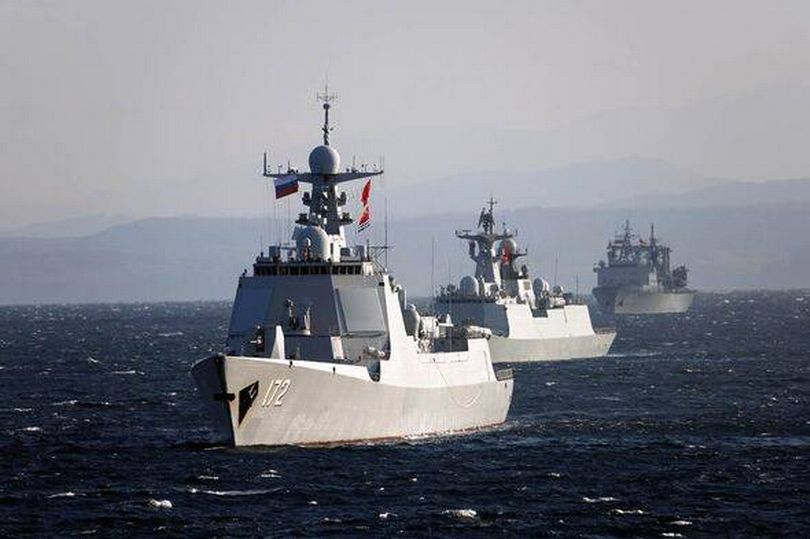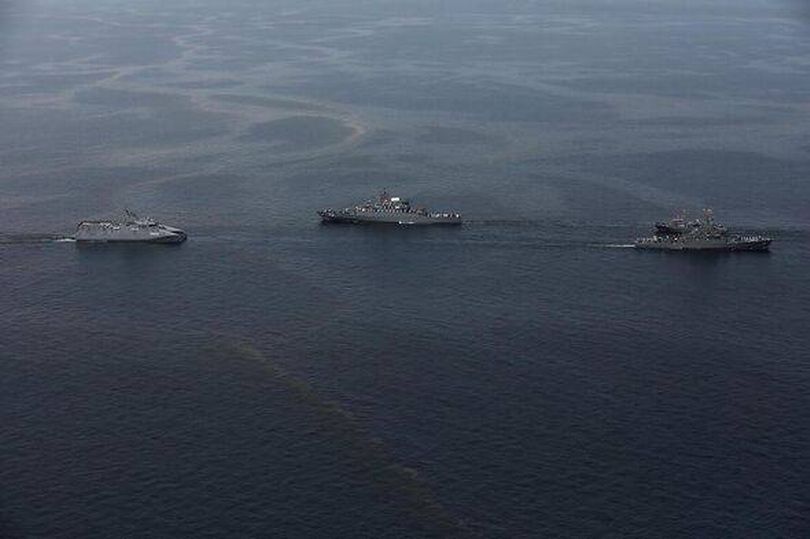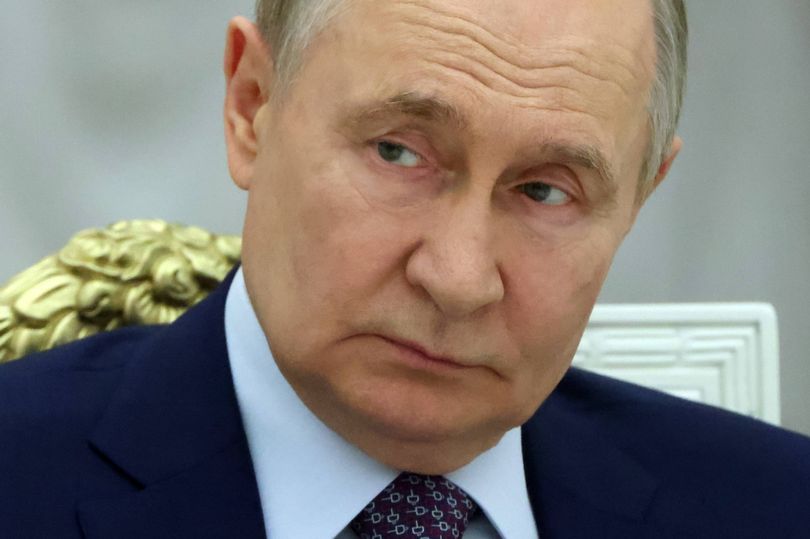Vladimir Putin has recently started the world’s biggest game of cat and mouse, launching Russia’smost extensive naval drillsover the course of four different bodies of water.
This week signaled the beginning ofRussia’s July Storm exercises, with coordinated activities scheduled in the Arctic and Pacific Oceans, along with the Baltic and Caspian Seas. The Russian Ministry of Defense reports that more than 15,000 personnel are involved in the exercises, using 50 naval and support ships, 120 aircraft, 10 coastal missile systems, and around 950 additional military drills.
The Russian Baltic, Northern, Pacific, and Caspian Fleets are all participating, with Admiral Aleksandr Moiseyev overseeing the operations. He assumed the position of Commander-in-Chief of the Russian Navy last year.It follows a severe warning as NATO members advised all residents to “leave Russia immediately” in response to a “serious worsening” situation.
Military analysts have closely examined Russia’s naval forces, recognizing the effectiveness of its nuclear-powered submarines as a significant advantage. However, they point out that Putin’s fleet mainly consists of outdated Soviet-era ships that are not equipped to exert global influence in a major war, according to reports.the Express.
Key elements behind this situation involve Russia’s restricted access to open seas and warm-water harbors, primarily because of NATO and U.S. expansion forming bottlenecks, along with the reality that it does not possess any active aircraft carriers, as its Admiral Kuznetsov has been undergoing repairs since 2017 and is not considered operational.
Nevertheless, Russia continues to hold the third-largest navy in terms of the number of ships, coming after the United States and China, even when considering the losses it has incurred in its war with Ukraine.
The Russian Defense Ministry mentioned that the goal of Operation July Storm was to assess the readiness of its fleets to carry out “unusual operational missions.”

This involves utilizing various advanced systems, such as long-range accurate weapons and autonomous technologies, as the country keeps increasing its aggressive statements towards Europe and the U.S., which has recently given Putin a 50-day deadline to end the conflict with Ukraine.
Open-sea activities allow its navy to conduct training for anti-submarine combat and protocols to protect military bases, trade routes, and other key economic areas.
War game scenarios can also replicate drone and various forms of military assaults, while executing their own attacks across both sea and land areas.

As mentioned, the scale of this exercise is considerable, although Moscow claims it is just a standard procedure.
Military specialists have been attracted to the extensive region involved in the exercises, ranging from NATO’s eastern border, close to Poland, to maritime passages in the Pacific.
The July Storm is another initiative by Putin to showcase his naval capabilities in various regions while keeping his troops ‘battle-ready’ in case of increased tensions. Earlier, on July 2, the Royal Navy observed the Novorossiysk, a Russian Kilo-class submarine, as it traveled through the North Sea and English Channel, seemingly demonstrating strength due to its closeness to NATO waters.
The submarine was welcomed by a assistance tow boat, accompanied by monitoring from HMS Mersey and naval helicopter capabilities.







